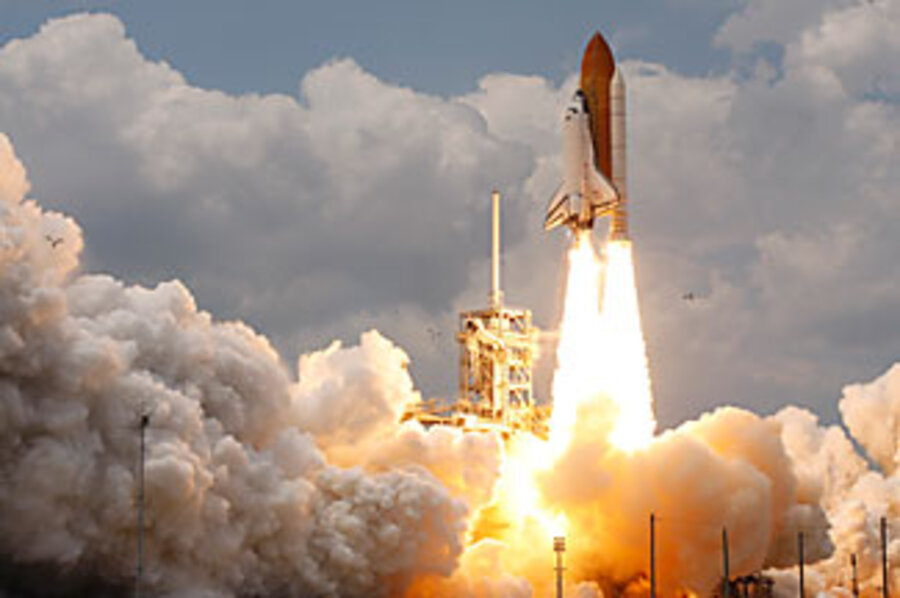Up and away for final Hubble mission
Loading...
Hang on Hubble, help is on the way.
NASA's final shuttle mission to repair and upgrade the Hubble Space Telescope cleared the launch pad at 2:01 p.m. Eastern Daylight Time Monday afternoon – an auspicious beginning to an ambitious 12-day mission.
In addition to upgrading two of the observatory's main instruments, the crew will also replace batteries, some gyroscopes, and a telescope the observatory uses to help it remain pointed properly, as well as for science.
And spacewalkers will attempt to repair the advanced camera for surveys and the space-telescope imaging spectrograph – two workhorses that currently don't function and that weren't designed for on-orbit repairs.
They represent perhaps the most challenging tasks on the crew's to-do list.
"We've never tried to repair instruments like this" during a spacewalk, says Ed Weiler, NASA's associate administrator for the science mission directorate.
"Putting in new instruments is bad enough, but it's more or less routine," he continues. "Taking things apart and putting in circuit boards when you're an astronaut wearing gloves? It's a little dicey. We'll take our best shot, but let's all remember that these instruments are dead right now. If they don't get fixed, we haven't lost anything."
The first major task, however, is to inspect the shuttle Atlantis for any damage to its thermal-protection system that might have occurred during launch. Technicians noticed ice building on one of the umbilical cords linking the orbiter to its main fuel tank before launch. But on further inspection, they found the ice melting in the afternoon heat.
Mission controllers detected what appeared to be two pieces of debris falling away as the orbiter shed its solid-rocket motors, and two more pieces fell away later in Atlantis's climb into space. But they did so at an altitude where the atmosphere was so thin that the pieces wouldn't have had much velocity and so would be unlikely to do any damage, according to William Gerstenmaier, associate administrator for space operations.
Still, astronauts will conduct some 9-1/2 hours worth of inspections to check for launch damage to the heat-absorbing tiles and the carbon materials that protect the leading edge of the wings and tail.
On trips to the space station, the shuttle does a flip to present its belly to the station just before docking. This allows the station crew to take detailed photos of the tiles on the orbiter's underside, which get beamed back to Earth for analysis. For this mission, Atlantis's crew will use the orbiter's robotic arm and inspection boom to survey the underside, as well as the rest of the craft's surfaces.
If the crew finds irreparable damage, they will continue on to Hubble and complete their work, then head to a lower orbit to await rescue by the shuttle Endeavour, which is currently sitting on Pad 39-B at the Kennedy Space Center in Florida awaiting final preparations for a launch.
Mission planners expect Atlantis to reach Hubble just after noon on Wednesday.





